![]()
![]()
![]()
![]()

Power Functions motors power curves
Motor characteristics of my comparison page are established with a regulated, powerful laboratory power supply. But with PF receiver output, some voltage drop occur as current increases, and current limitation can also trigger in at high load..
Here are the curves showing mechanical power versus load torque for various motor combinations. The Power Functions receiver is externally powered from a regulated power supply, and I measured mechanical power at 9V (equivalent to 6 alkaline batteries) and 7.2V (6 NiMH rechargeable batteries).
As usual, weight lifting is used to apply constant torque. I used a pulley to double string length to get longer lifting time, and give more time for current limitations to trip.
Curves are established with V1 and V2 receivers. Improved characteristics of V2 receiver is barely noticeable with low power motors such as the weak E-motor or even PF medium. Improvement is better seen with the power hungry PF large, and clearly only V2 receiver can drive the 5292 RC-buggy motor! Remember that at this high current level, current limitation of the battery pack is a problem!
Single motor curves
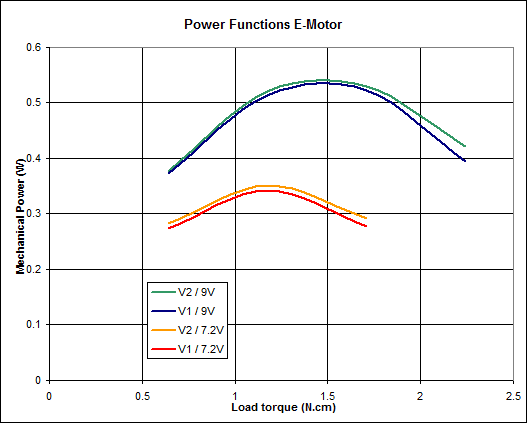
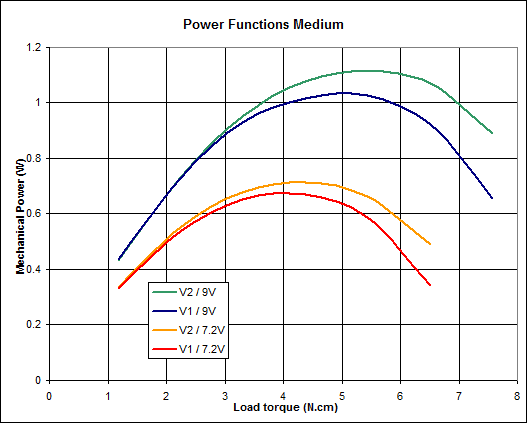
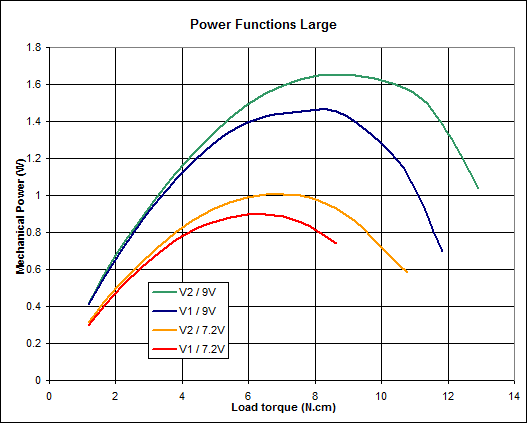
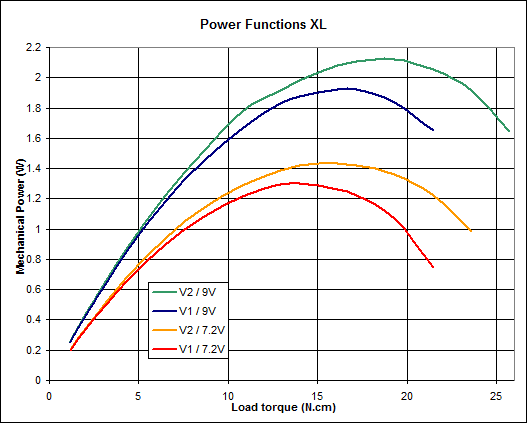
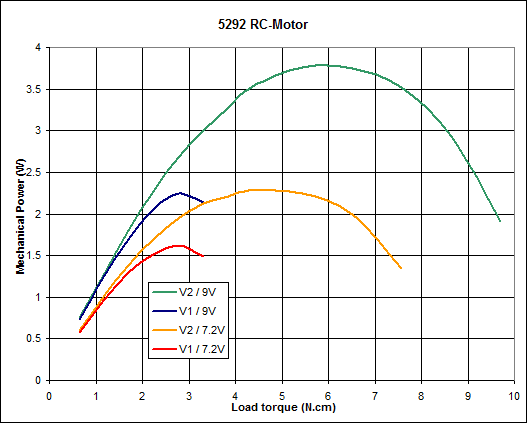
Two coupled motor curves
The following curves show performance of two parallelled motors on the same receiver output. E-motor was not tested here (too weak to be interesting, and I have only one!). 5292 motor was omitted too since one PF receiver output barely provides enough juice for one motor...
As this experiment showed me that there is little or no difference between adder-coupled motors or direct coupled motors, I used the later, simpler method.
Again, V2 receiver shows its strength!
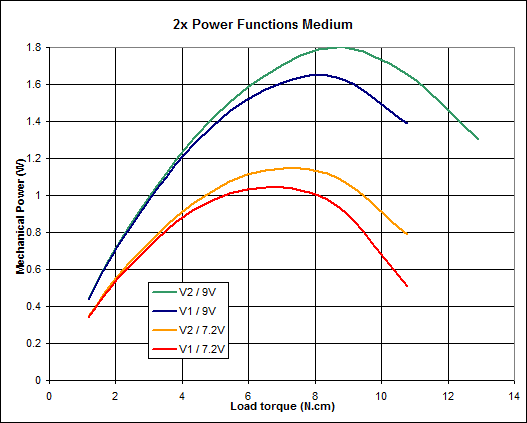
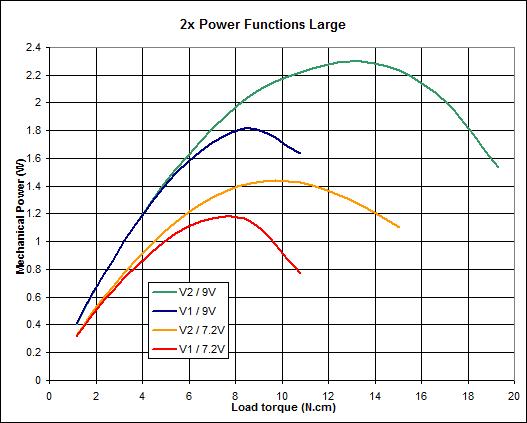

![]()

![]()
![]()
![]()